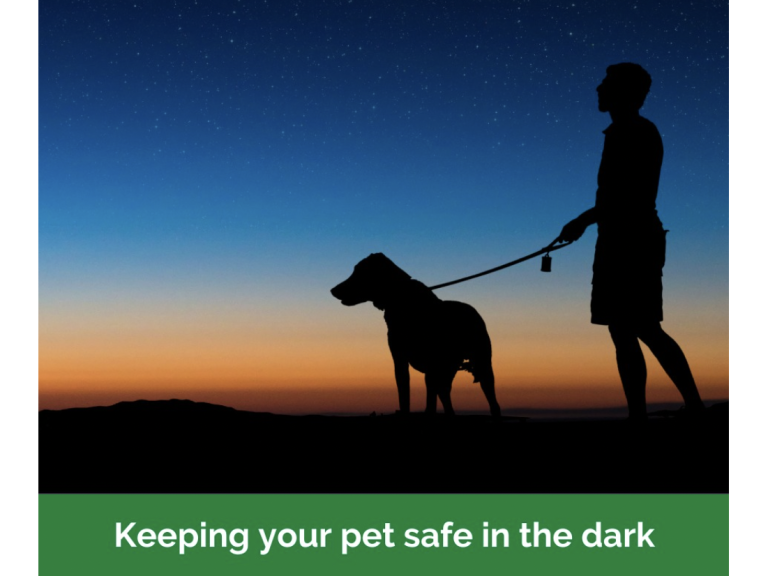
We humans are probably not looking forward to the shorter days of autumn and winter. For many people this often means getting up in the dark and coming home in the dark too. It can have implications for our pets as well, so now is a good time to review what we can do to keep our pets safe in the dark.
If you brought home a new rabbit this year and they have been living outside this summer, you need to think about what to do as the nights draw in. Wild rabbits spend a lot of the day down a burrow or under foliage and not in bright light. Rabbits will get stressed, inactive, and overweight if they are forced to live with excessive amounts of light. Naturally their activity increases at dusk and dawn when they will come out to forage and, in turn their predators have also evolved to be around at that time too. Indoor and outdoor rabbits therefore have different needs:
We lead busy lives and inevitably we are going to have to walk our dogs in the dark over the next few months. Here are a few tips to help keep you and your canine friend safe:
Cats are nocturnal creatures and many enjoy being outside at night and are perfectly capable of looking after themselves. They have superior eyesight to us in the semi-dark and are very well adapted for hunting at dusk and dawn. The half-light allows them to be less easily seen by their prey. It is therefore quite difficult sometimes to get them to come in when we want! If you and your cat are both happy with this, then this is probably the least stressful solution. However it is a fact that more road accidents and fights happen in the dark hours. If they are used to wearing a collar then you could consider getting them a reflective collar which can be seen by motor vehicles.
If you want your cat to start coming in before we get too far into the dark nights then it’s a good idea to start training them now. Remember, if your moggy goes out at all, make sure their microchip is working. Ask your vet to check it at your next visit.
My husband and I run thebestof Shrewsbury. We have over 40 years' combined marketing experience (scary) to help businesses grow. Thebestof Shrewsbury promotes local businesses through our high-traffic...
The following Cookies are used on this site. Users who allow all the Cookies will enjoy the best experience and all functionality on the site will be available to you.
You can choose to disable any of the Cookies by un-ticking the box below but if you do so your experience with the Site is likely to be diminished.
In order to interact with this site.
To show content from Google Maps.
To show content from YouTube.
To show content from Vimeo.
To share content across multiple platforms.
To view and book events.
To show user avatars and twitter feeds.
To show content from TourMkr.
To interact with Facebook.
To show content from WalkInto.